David “LD” Gorman is an extremely busy person who is almost impossible to get a hold of nowadays. However, during the Christmas break, ProxyPL managed to find a gap in LD’s tight schedule for an extensive interview about the Summits, BTS as a company, casting and being 3/5 of the way to a bathtub interview.
David Gorman – also known as LD – is a professional Dota 2 commentator and one of the Beyond The Summit founders.
LD’s esports journey began back in 2012, when he started casting somewhat casually, from his home setup. His popularity skyrocketed in short order, his career took off. Since 2012, he has been invited to cast at every International championship and even got the chance to broadcast The International 3 Grand Finals.
In February of 2013, LD got Beyond The Summit going, alongside David “GoDz” Parker. Close to three years later, BTS is now one of the biggest broadcasting studios in all of esports, held dear by Dota 2 fans across the world.
Make no mistake, it hasn’t been all sunshine and daisies. “It’s still a fairly small startup company, and the nature of such companies is that people often wear multiple hats and have to juggle a wider variety of responsibilities at once,” says LD, admitting that things can get quite overwhelming at times, and the only way he can cope is “by working my ass off”.
![]()
The LD interview was conducted by ProxyPL for DotaBlast, on December 21st.
![]()
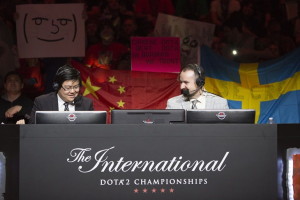
LD and Blitz casting a series between Team Secret and IG, during The International 5 © Valve
DotaBlast/ ProxyPL: Hi, LD! How are you? How are you spending your holidays?
David “LD” Gorman: I’m doing pretty well! A bit tired after the past six months, but I’m home now, visiting with some family for Christmas and catching up on long overdue work.
DotaBlast: The Summit 4 finished recently. Without a compendium this time around, the prize-pool didn’t grow as much as it used to in the past. Do you consider the event to be a success despite that or not? How did it affect Beyond The Summit financially? We remember hearing that you were barely in the green when the community contributions were tripling the prize-pool.
David “LD” Gorman: I do consider the event a huge success! Obviously, we’d love to have had a larger prize-pool and better crowdfunding options. Valve are ultimately the gatekeepers of what is added into the Dota 2 store though, and what we submitted ended up not getting the green-light, so in a lot of ways it was out of our control. Some of the items may be making an appearance in the Winter Major chest, which is a bit bittersweet for us.
We judge the Summit more by the viewership and how well it is received by the community and the players, and overall I’d say this is our best Summit ever in that regard.
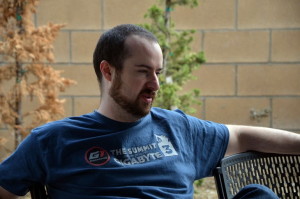
David “LD” Gorman, pictured during The Summit 3 © Beyond The Summit
Obviously, not having the same level of crowdfunding options available is worse for us financially. Still, the event is largely paid for by sponsor support, so the lack of crowdfunding didn’t cripple it. We were barely in the green last event because we built 45 PCs, bought 45 new monitors, and a bunch of new equipment to make the event run more smoothly.
We judge the Summit more by the viewership and how well it is received by the community and the players, and overall I’d say this is our best Summit ever in that regard.
Fans loved it, players were happy, and I think we struck an ideal balance this time around.
DotaBlast: The prize purses for The Summit 2 and 3 were very high and players seemed to take the competition a bit more seriously back than, compared to the Summit 4. That might be why we saw more players casting this time around. How is BTS planning to approach the announced Summit 5 and 6? In which direction do you guys want to go: the more serious Summit 2 and 3 style or the more casual style of the 4th one?
David “LD” Gorman: I actually don’t think the change in prize-pool was the main reason why you saw more players casting this time around.
At Summit 2, there were only 6 teams participating, and we didn’t have enough PCs for all the players to practice at the house. As a result, a decent number of players didn’t bother to come over unless they had a match scheduled. Additionally, with all the technical problems and delays, they were often tired or in a bad mood and thus didn’t want to cast. Lastly, because we had a round robin group stage, teams were scheduled to play at least one match every day on the first two, and teams who have to play games generally don’t want to cast before they’re eliminated.
![]()

LD, joined by Puppey and PPD, at the Summit 3 © Beyond The Summit
![]()
At Summit 3, we had 8 teams, but we still didn’t have enough PCs for all players at the house, due to space constraints. Twenty of the practice PCs were at the hotel, so players who weren’t scheduled to play that day would often choose to stay at the hotel to practice and play pubs. With less non-competing players at the house, we had less possibilities for guest casters available on-site.
At Summit 4, all 45 PCs were at the new (larger!) house, we had 8 rather than 6 teams, and the format was streamlined to a straight double elimination bracket. This allowed players quite a few days off, especially in the early stages, and then on the later days the eliminated teams had more time to cast if they so chose.
Lastly, I think one of the big factors is that players have come to love the Summit over time, as they’ve become more familiar with the event. Veterans like Fear, n0tail, Fly, PPD, iceiceice – who have played at quite a few past Summits, are a lot more confident about participating in the casts and often able to recruit teammates to do the same if they’re in good spirits, which most were throughout the event.
DotaBlast: We assume future Summits will be organized similarly, from a technical standpoint. Do you have any more improvements in mind? Also, the Summit 4 was the last tournament on the 6.85 patch. Do you think that made players more eager to cast and share knowledge?
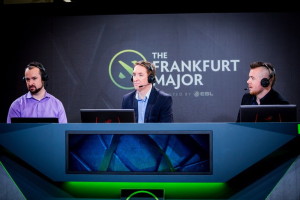
LD, ReDeYe and Capitalist, during the Frankfurt Major © Steffie Wunderl/ ESL
David “LD” Gorman: Our Internet was a bit unreliable during the event. Some of that was possibly on the ISP/Valve’s end, but it seemed like the house’s Internet itself could be improved. Otherwise, everything was quite smooth for our first huge event at the new venue. We have some solutions in mind which we’ll be investigating and implementing for future events.
I definitely think this tournament being the last 6.85 event meant we got more interesting info out of the players. If it weren’t the last tournament on the patch, I think you would have seen a similar amount of casting, but with less sensitive details being shared by the players, perhaps.
DotaBlast: We would like to talk to you about Beyond The Summit’s 2015. An interesting thing happened during the Frankfurt Major qualifiers. The official hub had nearly all the premier talent and high level production, while BTS went full-casual, with some less established casters and basic production. Despite that, you smashed the opposition when it comes to viewer counts. What would you say was the key factor that led to such a significant difference?
David “LD” Gorman: I don’t think there was any one factor that led to our success during the Major qualifiers. The BTS brand is one big part of it; no matter who’s casting, Dota 2 viewers will check out our stream anytime we are live, especially if our “starting lineup” (Godz, Merlini, KOTLGuy, Winter, and LD) is providing the coverage.
While we didn’t cast every game, we provided 24/7 round the clock coverage of all four regions (with slightly less focus on China, due to overlapping games), which is something the DreamLeague hub didn’t do. Most of our casters pulled 12-18 hour shifts consistently to ensure this was possible, so hard work was definitely a big part of it.
![]()
![]()
Lastly, I think viewers appreciated our more relaxed, fun approach to the coverage (THE MEMES). While we had some very serious, analytical casts, we generally tried to keep things light and enjoyable for the viewers. For regular tournaments, this isn’t always the right approach, but for the qualifiers with such a huge grind of concurrent games, it’s necessary to avoid boring the viewers to death.
DotaBlast: Does Beyond The Summit plan to continue covering qualifiers to Majors, in 2016? After all, you guys have been taking very long shifts lately. Do you think that other studios will continue to combine their top talent as they did for the Frankfurt Major?
David “LD” Gorman: We do intend to continue providing coverage of all the Major qualifiers. We’re not entirely sure if our approach will remain the same; it depends on how the casting landscape evolves in the months and years to come, as well as whether Valve continues to use the same format moving forward.
I don’t think you’ll see another mega-DreamLeague hub after what happened during the Frankfurt Major qualifiers, but I do expect all major studios will continue to create their own coverage of the major qualifiers in some fashion.
Valve doesn’t provide any financial support for the qualifier coverage and leaves it as a total free-for-all. Thus, the only way to make coverage financially viable is a combination of sponsorship sales (much more difficult to achieve when there is viewer competition) and Twitch ad revenue (generally very poor due to adblock and also inherently at odds with viewership competition, as viewers tend to leave if you run ads for more than a minute or two here or there).
The biggest issue with doing a mega-hub is honestly the travel and costs required. There are already so many 3rd party events for the top talent to attend, and adding four more intercontinental round-trips to that list feels like the straw that may break the camel’s back.
As some of the DreamLeague hub members have mentioned previously, Valve doesn’t provide any financial support for the qualifier coverage and leaves it as a total free-for-all. Thus, the only way to make coverage financially viable is a combination of sponsorship sales (much more difficult to achieve when there is viewer competition) and Twitch ad revenue (generally very poor due to adblock and also inherently at odds with viewership competition, as viewers tend to leave if you run ads for more than a minute or two here or there).
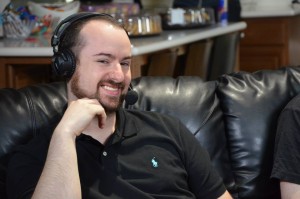
LD, during The Summit 3 © Beyond The Summit
DotaBlast: Speaking of the Majors, you have been vocal in the past about how you didn’t like the way the invites for the TI casting talent were given out. How was it for the Frankfurt Major?
David “LD” Gorman: With TI, I was mostly unhappy with the invite process. For the most part, I thought Valve did a pretty good job of selecting talent for the event and assigning them roles.
The one big exception for me is that I personally felt Godz deserved to be casting the main event or to be on the analyst panel. He’s a true student of the game and brings a ton of detailed knowledge about how the teams have been drafting and picking recently (especially the SEA and Chinese teams), which is something none of the TI analysts except Winter offered.
With the Frankfurt Major, I felt like the process was handled a bit better, since they did a public announcement of the talent invites (thus ending the uncertainty for those not invited) and also privately informed the borderline candidates who didn’t make the cut. It’s never a good feeling to be told you’re not getting invited, but it’s better than not knowing.
As for whom they invited, I consider it a pretty huge blunder that neither Godz nor Winter was invited to work the main event. Of course, I may be biased since I work closely with both of them, but for my money they are the two hardest-working analysts in the scene and bring a ton more research and draft/team knowledge to the table than a lot of the usual suspects. For me, the community outcry at their absence when the event ended strongly indicates that it was a mistake not inviting either.
Scheduling tournament dates and online qualifiers has become dramatically more difficult since the Majors and their qualifiers effectively block off 14+ weeks per year (and even more if you account for travel and recovery time). When it comes to tournament crowdfunding, it’s become significantly more difficult to get cosmetic items accepted into the game for 3rd party events.
![]()
>>> CONTINUED ON THE NEXT PAGE <<<
![]()

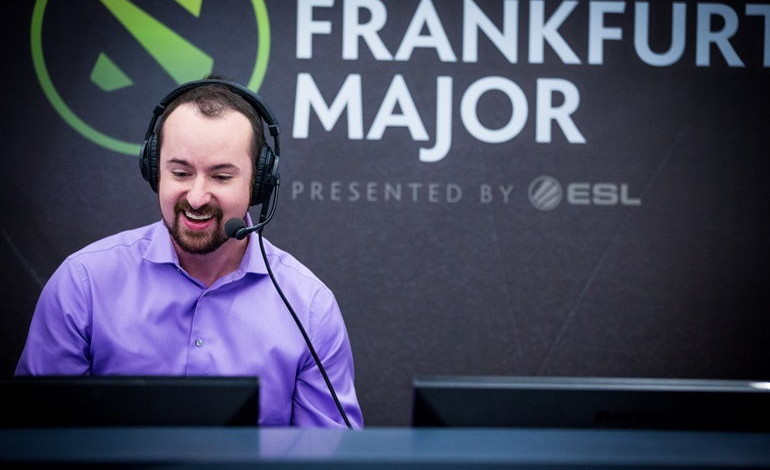
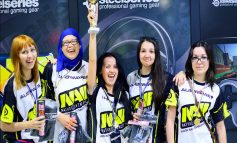
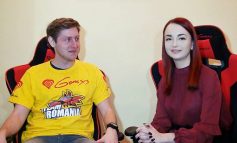
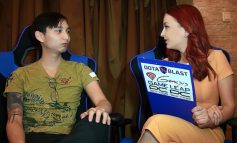
1 Comments
miraz94
(126 comments)Wondering what it is like to have a career in this industry. I mean what are his plans for the next 10 years?
March 8, 2016 at 5:28 pm